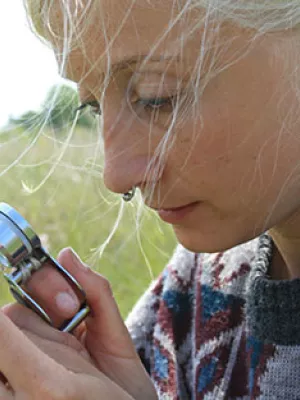
Lina Herbertsson
Researcher

Large-scale pollination experiment demonstrates the importance of insect pollination in winter oilseed rape.
Author
Summary, in English
Insect pollination, despite its potential to contribute substantially to crop production, is not an integrated part of agronomic planning. A major reason for this are knowledge gaps in the contribution of pollinators to yield, which partly result from difficulties in determining area-based estimates of yield effects from insect pollination under field conditions. We have experimentally manipulated honey bee Apis mellifera densities at 43 oilseed rape Brassica napus fields over 2 years in Scandinavia. Honey bee hives were placed in 22 fields; an additional 21 fields without large apiaries in the surrounding landscape were selected as controls. Depending on the pollination system in the parental generation, the B. napus cultivars in the crop fields are classified as either open-pollinated or first-generation hybrids, with both types being open-pollinated in the generation of plants cultivated in the fields. Three cultivars of each type were grown. We measured the activity of flower-visiting insects during flowering and estimated yields by harvesting with small combine harvesters. The addition of honey bee hives to the fields dramatically increased abundance of flower-visiting honey bees in those fields. Honey bees affected yield, but the effect depended on cultivar type (p = 0.04). Post-hoc analysis revealed that open-pollinated cultivars, but not hybrid cultivars, had 11% higher yields in fields with added honey bees than those grown in the control fields (p = 0.07). To our knowledge, this is the first whole-field study in replicated landscapes to assess the benefit of insect pollination in oilseed rape. Our results demonstrate that honey bees have the potential to increase oilseed rape yields, thereby emphasizing the importance of pollinator management for optimal cultivation of oilseed rape.
Department/s
- Biodiversity
- Centre for Environmental and Climate Science (CEC)
- BECC: Biodiversity and Ecosystem services in a Changing Climate
- Biodiversity and Conservation Science
Publishing year
2016
Language
English
Pages
759-769
Publication/Series
Oecologia
Volume
180
Issue
3
Document type
Journal article
Publisher
Springer
Topic
- Agricultural Science
Status
Published
Research group
- Biodiversity and Conservation Science
ISBN/ISSN/Other
- ISSN: 1432-1939